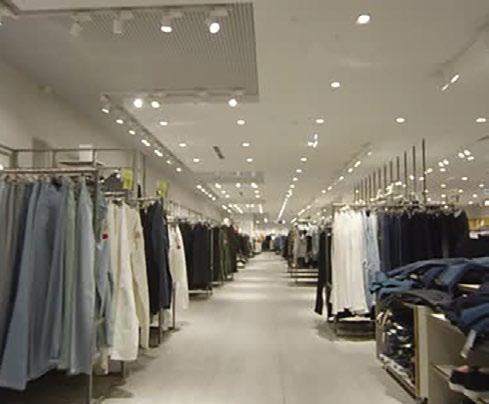
3 minute read
The stark reality of UK Retail
RETAIL The Stark Reality
The pandemic has had a seismic impact on retail around the world. Here, we take a look at the state of play in two of the worst-hit territories – the UK and the USA.
The UK
John Westwood, Founder & Group Managing Director at Blacktower Financial Management Group, analyses the impact of the virus on the UK’s retail market. Retail sales saw the biggest drop on record for retail sales, as many stores ceased trading from 23 rd March following government orders. Markets expected a 4% drop, however, figures came in worse at a 5.1% plunge. Clothing stores saw the biggest drop off in sales, whilst food stores and nonstore retailing were the two sectors that showed growth. Due to people panic buying food before lockdown in March, this prevented a bigger decline in sales. However, households may have been dipping into their stockpile supplies prior to lockdown or generally spending less as incomes take a hit. A further decline in sales is expected in April due to a widespread lockdown, and this could fall by 20-30%. Due to the uncertainty of COVID-19, many shoppers will not return to high street shopping once the lockdown has lifted due to health concerns. This will see rippling effects for months. COVID-19 will have a significant negative impact on the UK economy. In the short-run, it has generated substantial uncertainty for UK businesses on top of the uncertainty brought by Brexit. With the expectation of at least two consecutive quarters of negative GDP growth, the UK economy is plunging into a recession, which may be even deeper than the 2008 financial crisis. A recession will decrease sales revenues and profits, reduce business investment, increase unemployment and dampen business accounts. The ripple effects of a recession will decline consumers’ income, consumer confidence and spending drop. If businesses are able to build a bond with consumers during the crisis, bringing a sense of structure and calm, whilst encouraging people to come back to retail stores, restaurants and bars when lockdown ends, then this will have a positive effect on businesses.
Retail Store Sales by Category USA Percentage change from March to April 2020
+8.4% -3.5% -12.4% -13.1% -15.2% -20.8% -24.7% -28.8% -29.5% -38.0% -58.7% -60.6% -78.8%
Nonstore Retailers Building and Garden Materials Motor Vehicle and Parts Food and Beverage Health and Personal Care General Merchandise Misc. Retailers Gasoline Stations Food Services and Drinking Places Sporting Goods/Hobby/Musical Furniture and Home Furnishings Electronics and Appliances Clothing and Accessories

The USA
Consumer spending fell a record 16.4% in April as a direct result of the pandemic, according to a recent government report. Some 68% of the nation’s $21.5 trillion economy comes from personal expenditure, which fell over 7.6% in the first quarter, at the same time as social distancing measures began to take hold. The data also showed that the slowdown continued into the first part of the second quarter as layoffs began to mount and consumers went into lockdown. Clothing stores took the biggest hit with a 78.8% tumble. Other big losers were electronics and appliances (-60.6%), furniture and home furnishing (-58.7%) sporting goods (-38%), and bars and restaurants (-29.5%). Online and non-store retailers rose 8.4%. Total spending amounted to $403.9 billion, with the biggest factor in the downturn being a collapse in clothing and accessories that amounted to a 78.8% fall. Retail trade overall saw a 15.1% drop from March and a 17.8% slide from April 2019. The retail industry, particularly brick and mortar stores, already had been in a state of peril, and the coronavirus measures have only added to the misery although, with some restrictions being relaxed, analysts hope that the economic data will turn around fairly quickly. The collapse in retail spending comes amid job losses unseen in the postWorld War II U.S. As we go to press, nearly 39 million Americans have lost their jobs over the past nine weeks.










